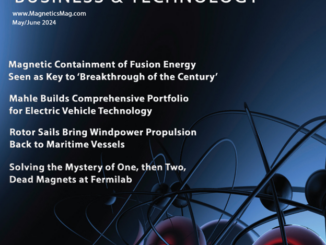Paragraf Strides toward Commercializing Graphene-Based Hall Effect Sensors for Highly Precise Magnetic Measurement
Bolstered by £16.2 million in investor funding and a new collaboration with CERN, UK-based Paragraf is striding forward to commercialize its breakthrough graphene Hall Effect sensor which could be a gateway to next generation magnetic field sensing.
Magnetics-Based Turboexpander Enables Energy Recovery from Pressure Letdown Stations in Natural Gas Pipelines
Magnetic technologies are being employed in a wide range of applications to solve real-world problems involving high-speed machinery, especially in hostile or difficult environments. In this article, we will examine an interesting application: waste energy recovery from pressure reduction in natural gas pipelines.
Buildup of Littoral Naval Forces Brings New Attention to Underwater Magnetic Sensing
The world’s naval powers are beefing up their littoral combat capabilities to protect and penetrate coastal waters, an effort that is bringing fresh attention to magnetic sensing of submarines, underwater mines and ships. On the other side of the equation are advancements to degaussing systems designed to conceal underwater magnetic signatures.
Embedding Magnetics Achieves Reliability & Consistency, Part 2 of 3
Part 1 of this series provided an overview of embedded magnetic construction. Part 2 looks at the implementation of an Ethernet media filter with the embedded technology. Ethernet has been the leading conduit for Local Area Networks (LANs) since the late 1980s. It has evolved from 10 Mb/s data rates exceeding 100 Gb/s . Readers familiar with the technology know that behind every wire-line Ethernet port reside 8 or more transformers.


